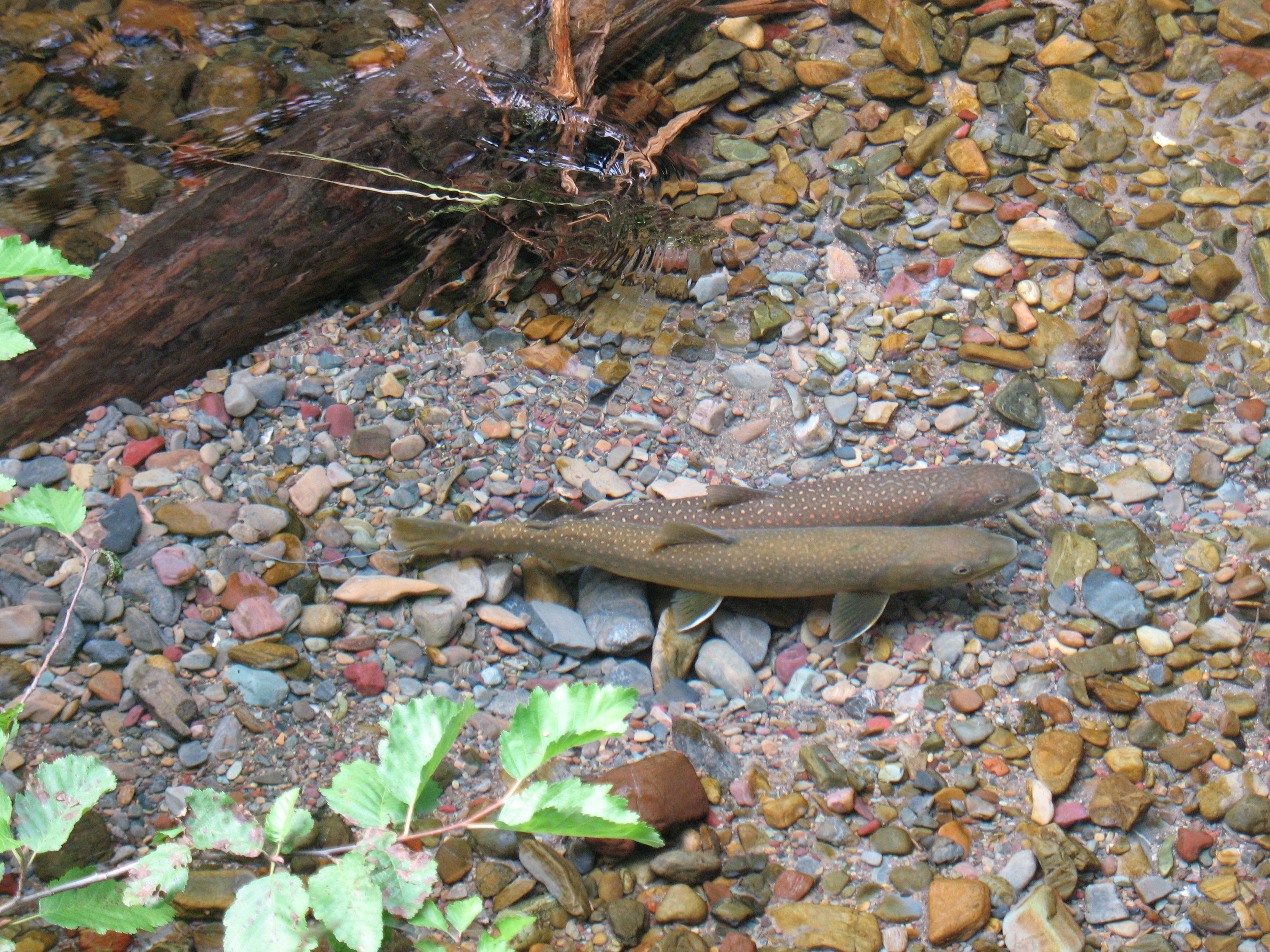If fish could rejoice, you might say that bull trout are celebrating like no other in the removal of the Elwha dams. Not only were bull trout the first of the salmonids to rush upstream after the path was clear, evidence suggests that many of these resourceful fish also have taken advantage of the newly opened route to saltwater.
Overall, studies have shown that the diet of the Elwha bull trout has been enriched with improved access to habitats and a more productive food web. Since dam removal, the bull trout are able to find a greater abundance of prey, including salmon eggs; young Chinook, coho and steelhead; and other fish, such as sculpins and stickleback. This increased food supply, including prey in saltwater, may be credited with a more rapid growth of individual bull trout, averaging 9 percent larger than before dam removal for fish that reach age 3 and 20 percent larger at age 4.
“Of all the Pacific salmonids, bull trout require the coldest, cleanest water,” said Sam Brenkman, chief fisheries biologist for Olympic National Park who has studied the elusive bull trout for more than 20 years. “Bull trout will migrate farther upstream than most species to spawn in the uppermost portions of the watershed, where we have these really cold waters.”
One well-traveled fish wandered 104 miles — more than twice the length of the entire river — during the two-year tracking effort.
Removal of the Elwha dams has opened a migration corridor into pristine spawning habitat high in the Olympic Mountains. This vast upper watershed of the Elwha River is protected within the confines of Olympic National Park. Since dam removal, no fishing has been allowed anywhere on the river. Such conditions provide an opportunity to restore large numbers of bull trout, listed as a threatened species in the lower 48 states.
“I’ve had a keen interest in bull trout since early on in my career,” said Brenkman, who headed up a team that discovered the anadromous (sea-going) nature of bull trout on the Olympic Peninsula in 2005. Until that time, a fair number of experts believed that bull trout stayed in freshwater.
“These fish have a unique life history,” Brenkman said. “They can migrate to the ocean and come back; they can dip into other river systems before returning home to spawn; they can stay in the river or move into lakes.”
Taxonomically, bull trout, Salvelinus confluentus, are in the family Salmonidae, which includes all salmon and most trout. But bull trout are actually a type of char, residing on a branch of the family tree that includes brook trout, Dolly Varden trout and Arctic char.
To track the movement of bull trout in the Elwha after dam removal, Brenkman and his associates imbedded radio transmitters in the bellies of 141 fish starting in 2014. Of those radio-tagged fish, 43 percent initially moved upstream, 39 percent initially moved downstream, and 11 percent stayed near their point of release. The remaining 8 percent could not be relocated.
Of the 78 bull trout tagged below the former Elwha Dam site, 43 moved upstream past that dam site. Of those, 23 continued on past the former Glines Canyon Dam site.
Each year, from 2014 to 2017, tagged fish were detected in areas farther upstream than the year before — with one exception in 2015. In 2014, the fish reached a point 19 miles above the river mouth; in 2016, they reached 32 miles, and in 2017, they reached 40 miles. (In 2015, a rockfall created a partial barrier to migration, reducing the maximum upstream migration to 13 miles before the rocks were blasted away.)



